I tested Samsung’s QN95C Neo QLED 4K TV, and now OLED has reason to worry
The Samsung QN95C series is the company’s flagship line of Neo QLED 4K TVs for 2023, offering the widest range of features along with the latest picture quality refinements – the elite tech you'll find in the very best Samsung TVs.
Neo QLED models differ from the company’s regular QLED TVs in that, along with a Quantum Dot layer for enhanced color and brightness, they incorporate a mini-LED backlight that allows for a more refined level of local dimming. Samsung is now several generations into Neo QLED, and this latest version is the best I’ve seen by a long shot.
That’s not to say that last year’s Samsung QN95B, a model that received a five-star rating in our review, along with a well-deserved place on our list of the best 4K TVs, was anything less than a stellar performer. But Samsung is on a mission to push the boundaries of what mini-LED-backlit LCD displays can deliver, even competing with the company’s OLED models like the Samsung S95C, and the QN95C clearly ups the ante.
I was invited by Samsung to do a hands-on test of a 65-inch QN95C ($3,299 / around £2,750 / AU$4,900) at the company’s New Jersey facility. While the room I tested it in was far from ideal – a glass door leading out into a well-lit hallway prevented me from viewing in a fully darkened environment – it was sufficient to get a very good sense of what this TV is capable of, including running my own measurements.
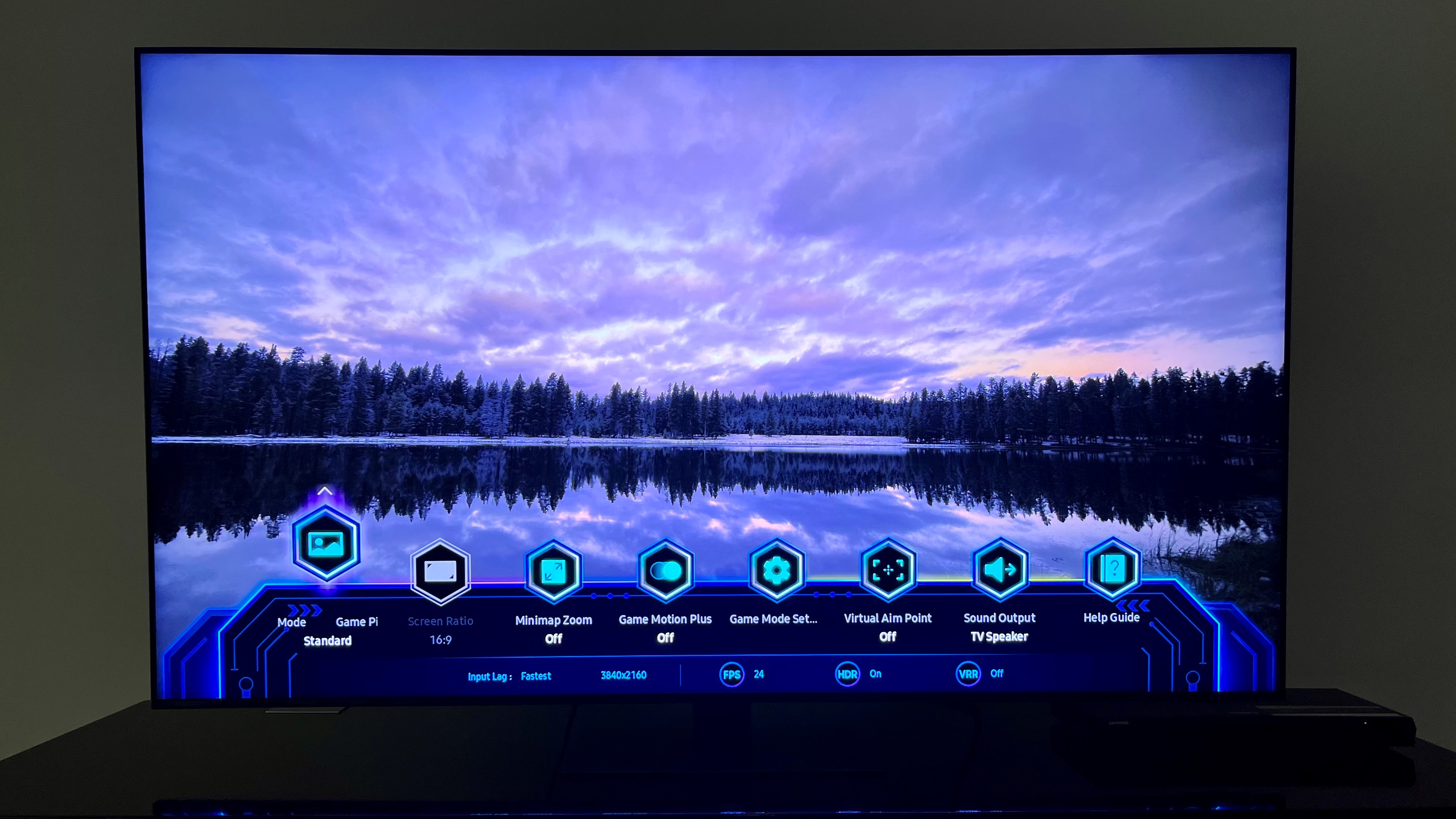
But first the details of the QN95C. Samsung’s flagship Neo QLED 4K TV isn’t yet available, but it will be sold in 65-, 75-, and 85-inch screen sizes. Unlike last year’s QN95B, the new model omits Samsung’s external One Connect box, and instead provides four built-in HDMI 2.1 ports that support up to 144Hz refresh rates, along with VRR and FreeSync Premium Pro.
The QN95C’s Neural Quantum Processor uses 14-bit processing and AI to upscale images to 4K resolution. A new Auto HDR Remastering feature is onboard to dynamically add HDR10+ high dynamic range to standard dynamic range images. (Like other Samsung TVs, the QN95C lacks support for Dolby Vision HDR.) The QN95C also features a new dimming tech that brings “improved brightness and grayscale control to accurately render both luminance and extreme details across the whole screen,” according to Samsung. Similar to the company’s QN900C flagship 8K Neo QLED model – you can read our early hands-on Samsung QN900C review too – the QN95C features an Anti-Glare screen plus Ultra Viewing Angle technology to improve off-axis viewing.
I didn’t get a chance to do a serious audio evaluation of the QN95C, but new upfiring speakers are provided that reproduce overhead effects in Dolby Atmos soundtracks, and these provided a real sense of spaciousness when I watched movie clips. The QN95C also features Object Tracking Sound+ to enhance the spatial accuracy of sound effects and Q-Symphony 3.0, which lets you combine the set’s built-in speakers with an external Samsung soundbar's speakers in one big soundscape.
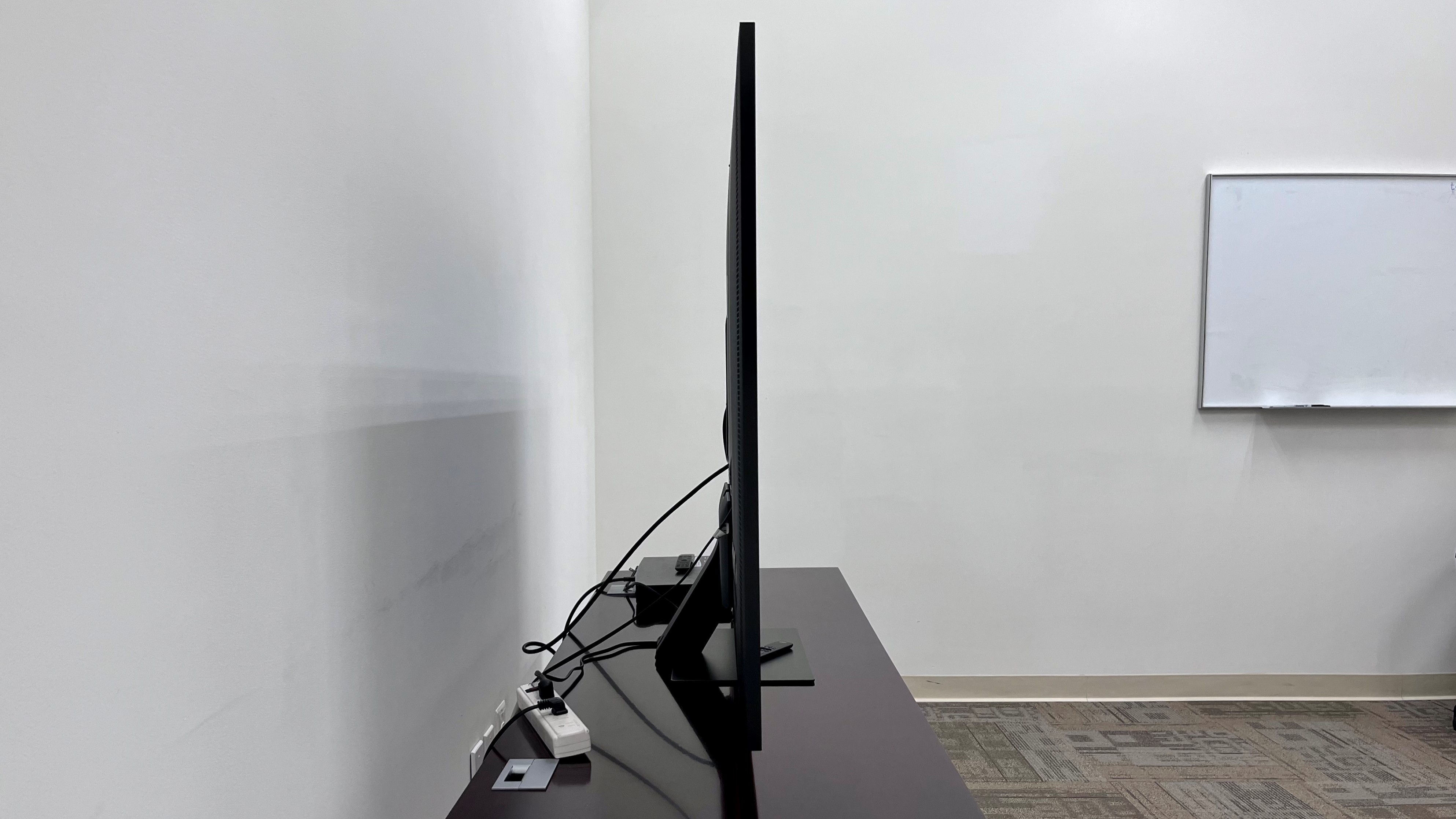
Even with connections on Samsung’s flagship 4K Neo QLED now built into the TV rather than residing on an external One Connect box, the QN95C has an appealingly slim form factor. That’s because a new slim power board is used that, according to Samsung, optimizes efficiency while also allowing for the TV’s depth to be shrunk down to under 20mm thickness. Along with its four HDMI 2.1 ports (one with HDMI eARC), the QN95C provides an optical digital audio output and an RF input for connecting an indoor TV antenna to receive next-gen ATSC 3.0 digital TV broadcasts. It also comes with Samsung’s Solar Cell remote control, which collects ambient light to extend battery life.
During my hands-on test, I didn’t find Samsung’s Smart Hub interface to be radically different from the version found in 2022 TVs. You need a Samsung account to download apps and can edit some onscreen menu items for convenience. I did get a chance to check out the Game Bar menu, which provides quick onscreen access to gaming performance-related features. This feature is separate from Samsung’s Game Hub, which centralizes cloud gaming selections from Xbox, Nvidia GeForce NOW, Amazon Luna, Utomik, and more for console-free playback. AirPlay 2 is also supported on the QN95C for casting audio and video from Apple devices.
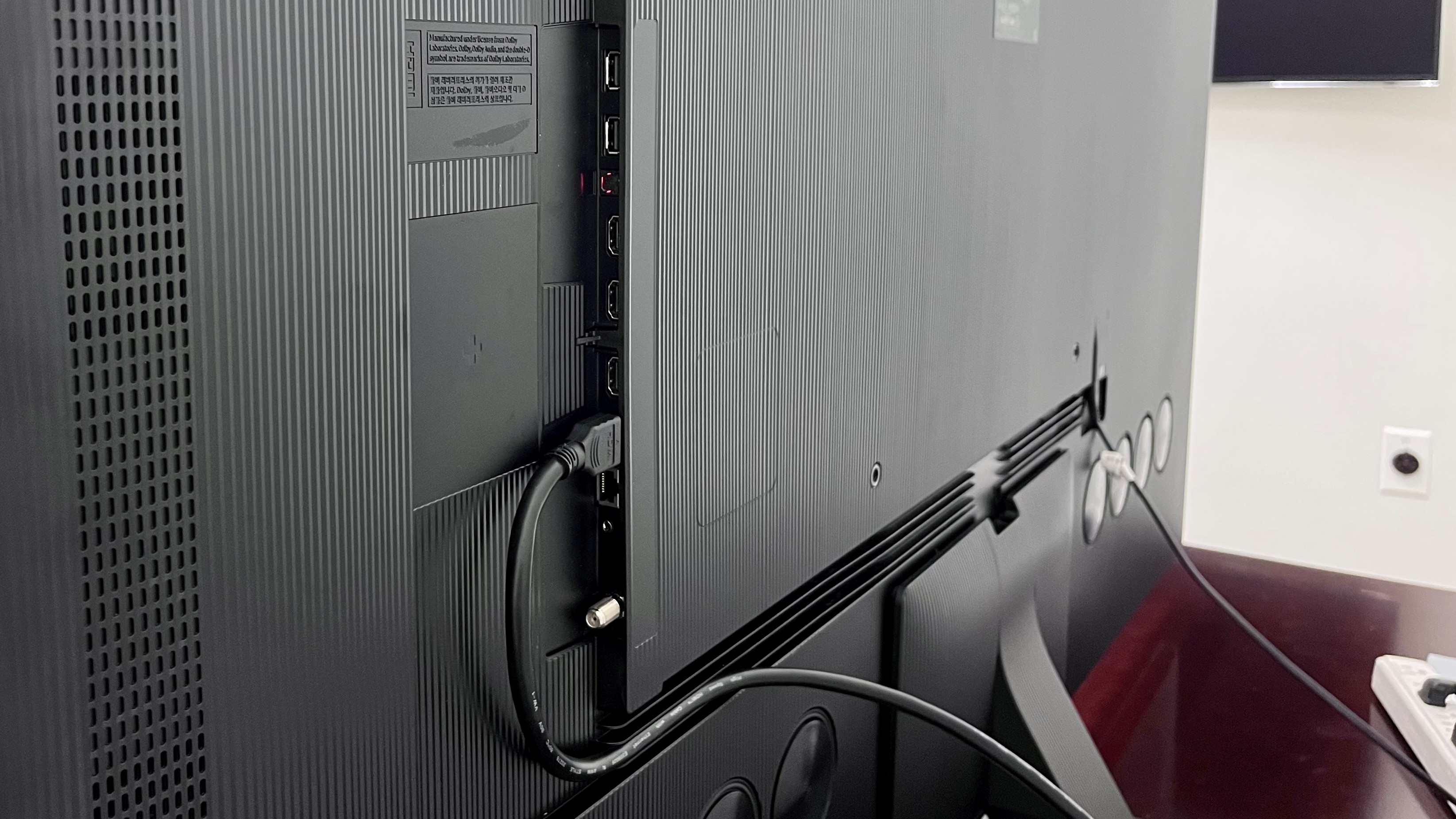
Beautifully bright
The QN95C’s Ultra Viewing Angle tech resulted in images remaining bright and with punchy contrast even at far off-center viewing positions, while the Anti-Glare screen was effective in reducing the effects of overhead lights (or, in this case, light beaming in from the adjacent hallway). When viewing full-screen white test patterns, Samsung’s flagship Neo QLED displayed excellent uniformity, and while I was unable to measure contrast due to the room’s sub-optimal lightning conditions, both black depth and uniformity appeared to be excellent.
Peak brightness measured on a 10% white window pattern in Filmmaker mode was 2,321 nits, an impressive result. Also impressive was the set’s input lag in Game mode, which measured 9.8ms, a result that easily ranks the QN95C among the best gaming TVs.
Switching back to Filmmaker mode, the QN95C’s measured coverage of UHD-P3 color space was 94% and its BT,2020 color space coverage 69.5%. This result was mostly in line with what was measured on the QN900C 8K TV, though below the performance level I measured during my hands-on Samsung’s S95C OLED TV review time – it looks like QD-OLED is the tech to beat for color.
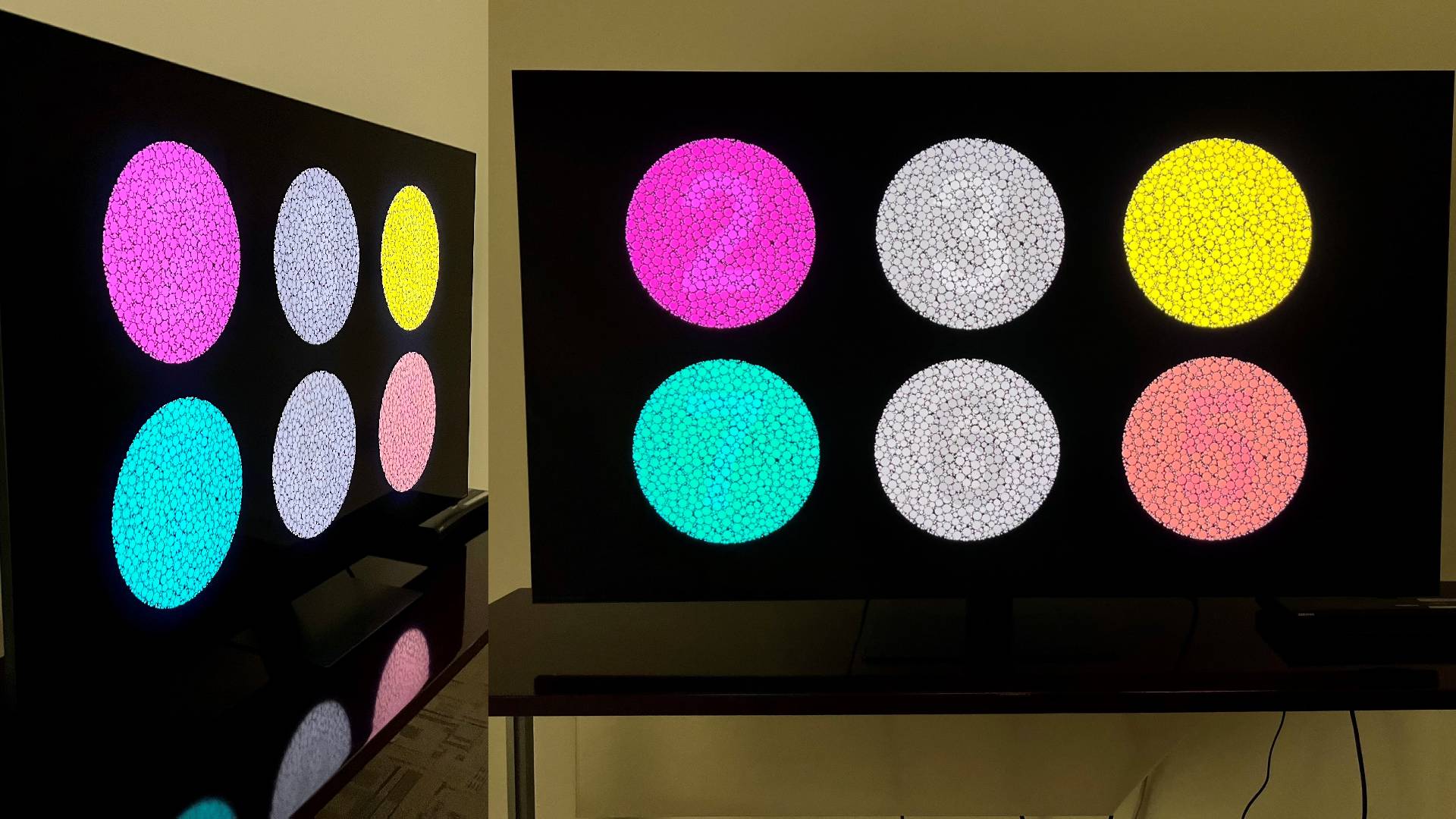
Blooming be gone
Turning to the Spears & Munsil UHD HDR Benchmark disc’s video montage section, the set’s powerful light output let it reveal a wide range of highlight details in 4K HDR footage mastered at a 4,000 nits brightness level. But it was clips that are meant to test a TV’s local dimming capabilities that really cued me in to the QN95C’s performance. Many TVs, even mini-LED-backlit ones, will show “blooming” effects in sequences such as the brightly lit ferris wheel against a black background, which means that light from the bright areas is leaking into the dark ones, turning blacks to gray. The QN95C, in contrast, handled this material extremely well, and the same was true with reference movie scenes I watched.
When I did a hands-on test of Samsung’s QN90B in 2022, I noticed a high degree of judder in a scene from No Time to Die where a camera pans across James Bond walking on a craggy hillside. This was when viewing in Filmmaker mode, which disables any motion smoothing processing. Watching that same clip in Filmmaker mode on the QN95C, the camera motion was considerably smoother this time out.
A dark scene from Dune where the Bene Gesserit Reverend Mother tests Paul also showed a fair amount of background noise on the QN90B, but was completely absent on the new QN95C. Samsung clearly has done work on its motion and picture processing, and the results can be seen in this next generation of Neo QLED TVs.
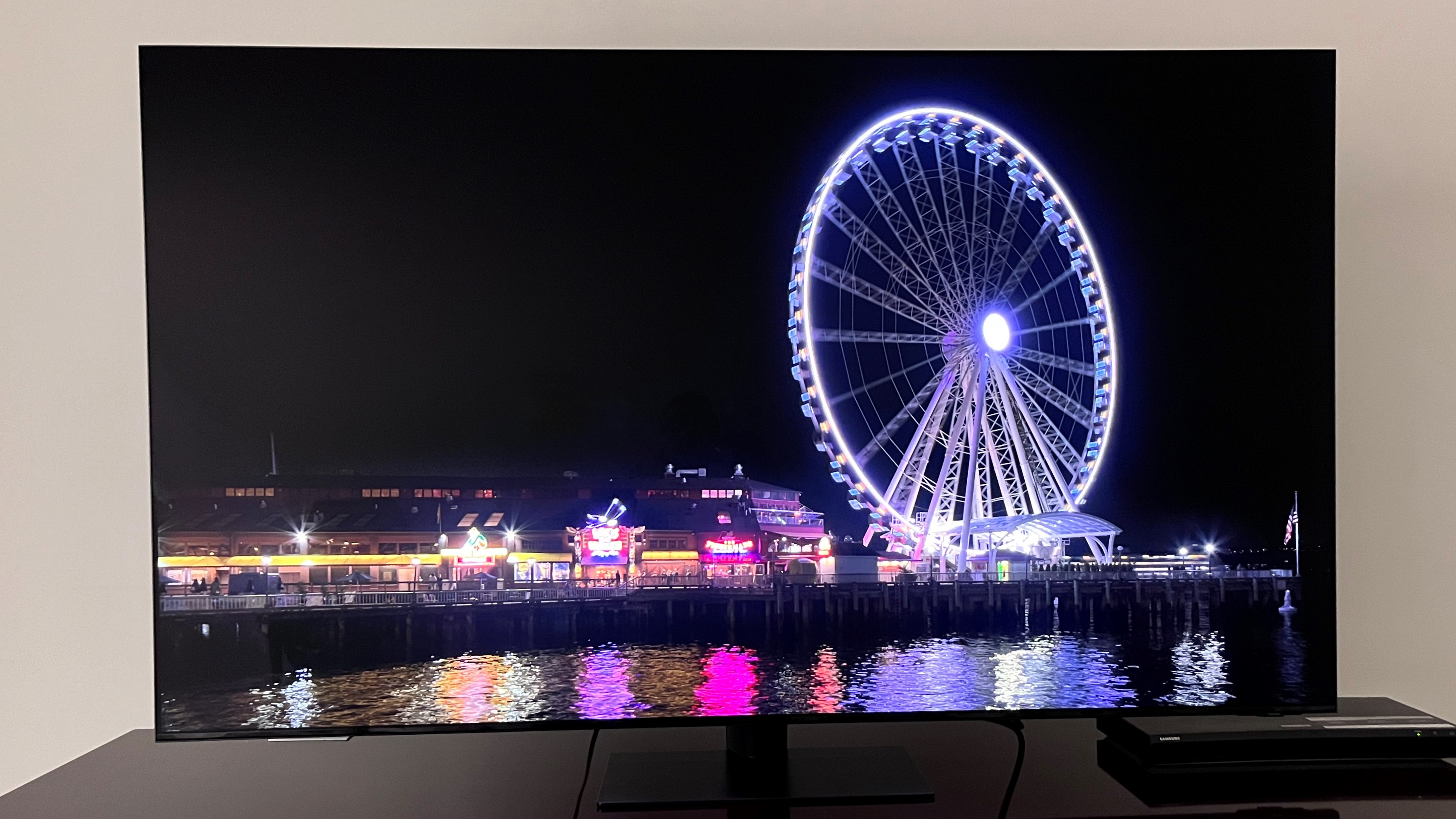
Having had the opportunity to get a next-gen Neo QLED demonstration and tech explainer from Samsung at CES 2023, none of these improvements came as a surprise to me. But it was gratifying to confirm them in a hands-on test of the QN95C, which is the closest I’ve seen an LED-backlit TV come to delivering OLED-like picture quality. The best OLED TVs, including Samsung’s own OLEDs, for that matter, should be worried!
0 comments:
Post a Comment